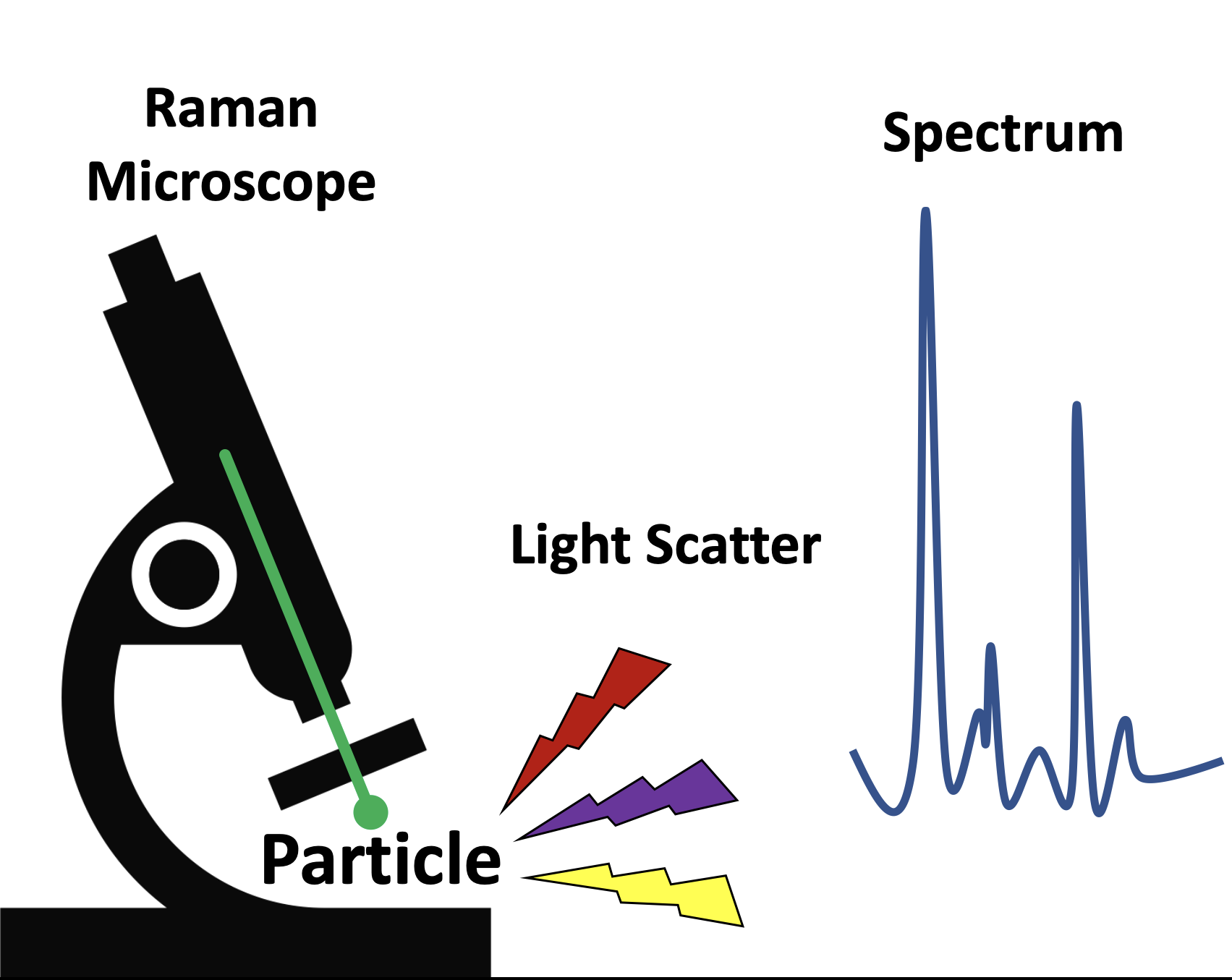Methods
Summary
Curious about how we identify microplastics from samples?
We use Raman microspectroscopy to help us identify microplastic particles as small as 0.5 um in size from samples. In our lab, we focus a laser beam composed of a single wavelength (ie. color) through a microscope onto the surface of a particle. When the light hits the surface, some of it loses or gains energy depending on the chemical structure of the particle. This creates light scatter of different wavelengths (ie. colors). We can then measure the intensity of each wavelength of the scattered light. The intensity of each wavelength (ie. color) of light is graphed to create a spectrum, which is very much like a fingerprint of the chemical structure of a particle. We can then compare this 'chemical fingerprint' to a database or library of known spectra (similar to a database of fingerprints) to help us identify the chemical make-up of a particle!

That's great!, But what about when there are thousands of particles?
We use computer programming to perform image-mapping (stitching together photos of each field of view through the microscope) and automatic detection of particles to target and analyze hundreds or thousands of tiny particles in a sample.
Protocols
This project has not yet shared any protocols.